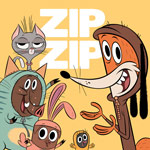It’s no surprise that France continues to be a market leader in animation production in Europe. Despite the tough economic climate in the continent, French studios strive to bring some of the best animated series for children and for adults to the market year after year. Thanks to continued support from the government and the subsidies provided by the CNC, and the talent and hard work of its animation community, the country produces about 400 hours of TV animation content annually. While most of the productions are financed with foreign partners, broadcasters such as Gulli, France 5, France 3 and TF1 continue to be the key outlets for animated fare. We thought it would be a good time to spotlight some of the studios that continue to deliver top-notch animated shows for both local and global consumption. Here’s a sampling of what some of these top toon producers had to share with us:
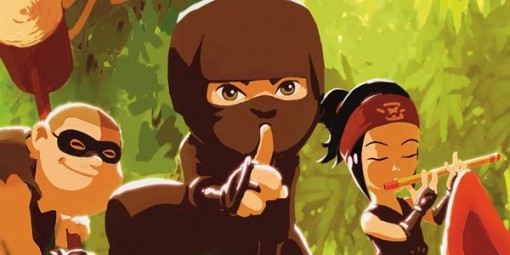
Cyber Group Studios
Interview with Pierre Sissmann, president
New shows at MIP-TV: We are bringing a new series called Mini Ninjas, a 2D show aimed at six- to 10-year-old audiences. Then, we have the second season of Zou, our popular preschool show (104 x 11), which is becoming a big brand, shown in 110 countries in 22 different languages, and it’s a big hit for Disney internationally. We are also offering the first episode of Mademoiselle Zazie (78 x 7), a co-pro with Scrawl for France Televisions, about two friends who live by the seaside, and more episodes of our CG-animated The Zorro Chronicles, which generated strong presales at MIPCOM last year. We introduced another preschool show called Mia at MIPCOM (a co-pro with Sardine) and we’re introducing a new series for seven- to nine-year olds, called Mirette, which centers on a young girl who solves mysteries as she travels the world with his father and their cat.
On the TV animation business in 2013: The market is very crowded and there is lots of talents globally. Some broadcasters have much less money than before, especially for international acquisitions. So that does reinforce the need for co-productions with French companies. Also, the broadcasters are aiming further down the line for commitments—They’re already planning their budgets for 2015. I find that the level of development that is required today from the animation studios is much higher than it was two or three years ago. I feel like we need to make a full trailer for every one of our shows. But we have five shows on the air, so I can’t really complain!
Support from the government: In order to receive French subsidies, you have to qualify, and there’s a complex system in place where you need 14 points out of 21 to qualify. It’s not a gift, because we’re making the French industry work. Our studio in Paris had over 100 employees in August—with social security changes, it’s a big commitment. On average, a show may cost 5.5 million euros, let’s say a preschool show costs about 5.4 million euros—out of that you can qualify to get 15 percent from the government and you can also get tax credits depending on the expenses you have in France—that would bring you up to 30 percent, if you’re very smart. That’s not counting the fact that French networks have to invest a percentage of revenues into animation. In a way, it opens doors to people who are looking for well-known brands or new content and triggers big international co-productions.
How to stay ahead: We try to produce animated content that can be seen in every territory in the world, and that’s not easy to do. Everyone wants to do it and produce Hollywood-style entertainment. When you look at countries like France, Italy, Spain, you noticed that a lot of their content is localized. We want to globalize ours. We learned the importance of story and solid writing at Disney. On our show Zou, we have animation veterans like Theresa Plummer Andrews as our story editor. We aim to get the best French authors and international writers for our shows. We also believe that the visuals are very important. Our studio is specializing in CG right now. We’re tech geeks and have won several tech awards from the ministry of technology. We have to compete with big projects from the studios like DreamWorks and Pixar. They have raised the bar in terms of visual quality, and we invest a lot in technology to keep our standards high. We also invest a lot in every aspect of our productions, including the music.
The promise of apps and second screens: We look very carefully at how to improve our websites and our apps. Four years ago, we produced a web series for Michael Eisner’s company Tornante called Prom Queen, but we retreated from the market because there was no money. Two years ago, we went back and analyzed the market and we still don’t see a huge amount of money, but we want to be in that space, so we developed websites for our shows and created apps for our properties. We put out a nice ebook based on our show Zou, and we are going to release apps based on Ozie Boo, Zou and Totanka in several languages. We are encouraged by the results, but we look at is as marketing, as a way to extend our brand, and not a real revenue-generator.
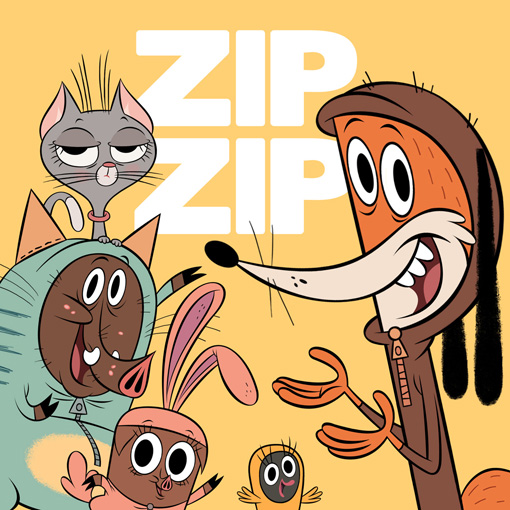
Go-N Productions
Interview with Eric Garnet, studio co-founder
New shows at MIP-TV: We have Zip Zip, a 52 x 11 animated series for boys and girls 6-10, which is in production with France Televisions and SuperRTL. The show is a fast-paced, character-driven buddy comedy about a group of animals of the forest who dress as pets and moved to a big city to enjoy food and lodging. We also have SuperBunny, a 52 x 5 series in development with France Televisions, which is based on a best-selling series of books by Stephanie Blake.
Take on the French animation business: The French animation business seems to resist the general recession quite well. French channels have kept fairly high levels of investment in series production until now, although we all anticipate a decrease for the years to come, which will compel us to be even more creative both artistically and in terms of financing.
Biggest challenges: To develop and push original developments in a market where most players still favor existing properties or famous brands.
How much help do you receive from the government? France is still blessed thanks to the support of CNC and tax credit.
How to stay ahead of the competition: Stay flexible and adaptable by limiting overheads. Stay focused on scouting new and contemporary talent (designers, writers, filmmakers). Stay open to the international market and try to develop projects with a wide international appeal.
New apps and multiplatform ventures: We have been exploring this area but it doesn’t bring significant revenues for the time being, TV remains our main moneymaker.
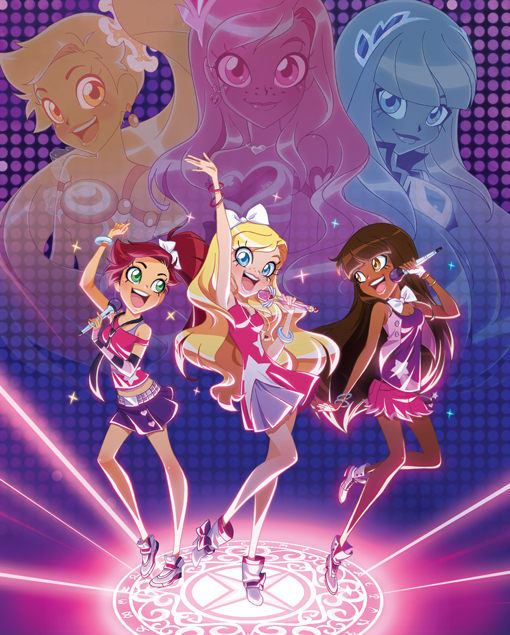
Marathon Media (a division of Zodiak Kids)
Interview with David Michel, general manager
New shows at MIP-TV: Our brand new show is LoliRock, very current, fresh take on the young magical girl genre, blending music and magic for the 6-11 girl audience. LoliRock is co-produced with France TV and Disney France. We have big promotional plans for Totally Spies in the Palace of Versailles this spring, in May or June, perhaps around the time of the Annecy Festival. Our storyboard-driven Nickelodeon Show Blake and the Squirrels is also in production.
The state of the toon business in France: It’s obviously going to be a hard year for our industry. The resources of our key French & European partners are declining and the only way to avoid getting hit by it is to come to the market with a very unique, distinctive, surprising creation. The economic crisis is impacting French public TV. Government is asking for cutbacks in the public sector and we’re expecting that the TV sector will also be affected.
Biggest challenges: Interestingly, this crisis hasn’t affected the demand for top artists—writers, designers, board artists, directors. These talents are harder than ever to get and one of our priorities this year is talent development.
Government support: The subsidy level hasn’t changed substantially over the last few years. However the average French network license fee is trending down, for a greater number of rights.
What makes your studio stay ahead of the competition? We enjoy the benefits of being both a small and a large company. On the one hand, we are an independent, creative studio focusing on working with the best talents and excellent production value. And at the same time, we benefit from the scale of Zodiak—the media group we are part of—for sales, marketing and global strategy.
On the new apps and second screen ventures: They are clearly starting to contribute to our bottom line. A show like LoliRock would never have been produced the same way a few years ago. The second screen/new media/technology side is now key and embedded within the production of our shows. I just read an article about how disappointed people are with their YouTube channels. People were expecting it to bring in lots of money. But you have to realize that YouTube is necessary for promotion and you have to be smart about it. In the app market, it’s very hard to be visible and compete with a huge studio like Disney, whose new Princess app skyrockets to the top of the app store chart the day it’s released. As an indie, we’re one of 10,000 apps that are launched on the same day. There’s money in it for people who hit the critical mass. For us, we have to come up with content that’s very different and quite original.
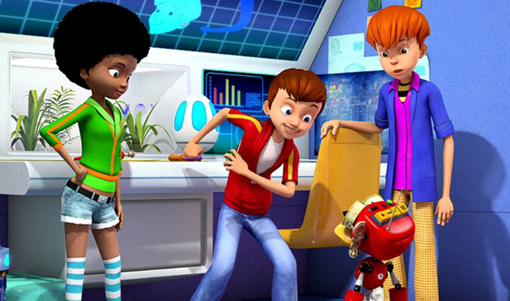
Millimages
Interview with Roch Lener, CEO
What’s new at MIP-TV: We’re delivering the final episodes of our boy-targeted CG-animated series (a 52 x 13 co-pro with Korea’s Synergy) Me and My Robot. We also have the second season of Mouk, our preschool series which has been doing very well in various territories. We’re also bringing two of our other favorite titles, 64 Zoo Lane and Louie.
On the animation scene: It’s become a lot more competitive to sell animated shows to broadcasters. There is still room for established producers with a good track record, but there are fewer slots than ever. Having said that, Millimages is a very international company, and we’re fortunate to have many successful partnerships in Europe, South America and Asia. Having been in this business for 22 years, we value the importance of making the right editorial choices and picking the right creative designs and talent. We also act as an international distributor and we even put together co-productions that don’t involve the participation of France as an official party.
Challenges of the industry: We always seek to develop the best properties and work with partners who have the best properties. It’s a never-ending challenge. We also have to make sure to develop a distribution arm that reaches the market of today. In the old days, there used to be national broadcasters in almost every territory, but now the market is more divided between the older broadcasters and new micro-broadcasters, including all the VOD and new platform ventures. It’s a necessity to reach all of them and there are thousands of them out there. Revenues from the catalog are crucial to finance the new shows.
Government support: Officially, it’s the same as before, but in reality, they’re giving out less money. There’s a financial crisis in the western countries and France is part of that.
How to stay ahead: In this business, everyone is number one in some area. We don’t care about being the number one in anything—what we aim for is to sell good programs to broadcasters. What we like more than anything else is that 98 percent of the English kids know and love our show 64 Zoo Land, or 95 percent of the kids in France are big fans of Corneil and Bernie. When small kids sing the theme song to Louie or get excited about watching Mouk, that’s what puts a smile on our faces. It’s not about being number one. It’s about having your work be recognized and loved by the viewers…When we can touch the viewers through our TV shows or through the second screen, we’re proud to have that direct link with the home viewers.
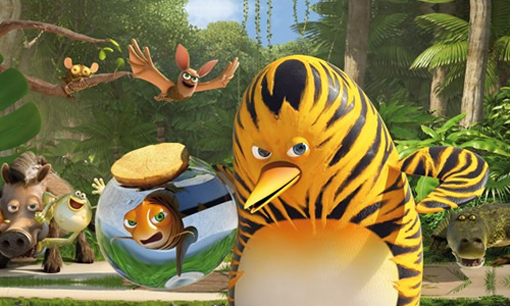
PGS Entertainment
Interview with Philippe Soutter, President
New shows at MIP-TV: We are very excited to be representing A² Entertainment and to be working with Andy and Amy Heyward. Through our partnership with them, we’ll bringing the first animated movie trilogy from Stan Lee to MIP-TV. Stan Lee’s Mighty 7 is a winning combination of super heroes, comedy, adventure and an all-star cast. U.S. partners are already in place with Hub for TV and Gaiam Vivendi for DVD. We will also have A² Entertainment’s Secret KidVenture Club, a one-of-a-kind series that empowers kids by helping them understand the world they live in. There’s also a new 52-episode season of our award-winning CG-animated show The Jungle Bunch, as well as Method/Morgen’s Heroes United, the exciting new series inspired by Playmobil, which features a myriad of characters … knights jousting against robots, a girl pirate and a brave knight riding across a dusty plain, and a glittery fairy teaming up with a scientist to save the world.
On the state of the TV animation business: It’s exciting to see our friends in the French animation business get the recognition they deserve. Each year, it seems the global appetite for French animation grows and the ratings these shows deliver is proof that these producers are at the top of their game.
The biggest challenges: Our constant challenge is to choose the right content and build trust with the producers we represent. We are proud of the fact that 80 percent of the 26 half-hour shows we represent have gone into a second season no later than one year after delivery. Our challenge is to keep this statistic alive!
Support from government: As a distributor, we don’t receive as much government support as producers do. We do however have a very efficient, media-savvy banking system here and are able to access their support to structure financing deals.
How to stay ahead: Our simple, straight-forward business model is our biggest strength. Because we focus only in distribution, we don’t compete with producers we represent, essentially doing the same job they do. And we concentrate on the kids’ programming business because we know this business inside and out. We’re not trying to sell drama one minute, a reality show the next and a kid’s show after that. For us it is and will always be all about kids and all about the producers.
On apps and second screens: For me, it’s all about having the right show as it always leads you to the best platform. However, that said, we are excited to see that the downturn of physical video/DVD is now being compensated by digital.
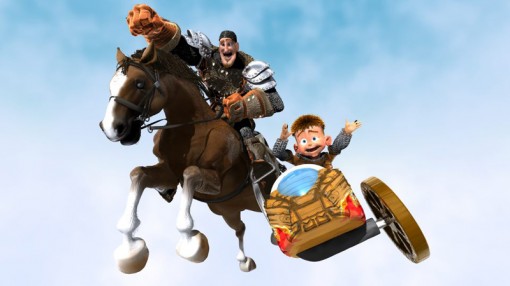
TeamTO
Interview with Guillaume Hellouin, president and CEO
New shows at MIP-TV: TeamTO will be presenting My Knight and Me (52 x 11), our new project in development, which is a comedy series with some epic adventure. The TV series is created by Joeri Christiaen and Thierry Gaudin, and it is a Franco-Belgian coproduction between TeamTO and Thuristar. It targets a six- to 10-year-old audience. The show follows the adventures of a young boy who dreams of becoming a knight but first he has to attend squire school and intern with his knight, Henri of Orange.
On the animation business in 2013: 2013 looks more exciting than ever; there are a lot of high-quality projects in preparation.
Biggest challenges: Our biggest challenge is to adapt ourselves to the environmental and technological evolutions. Subjects that were big hits five years ago are not today. Broadcasters are always looking for innovation, but they also need to be sure it will be a hit! Our main objective is to create with a high-quality level. That’s why for each project, our research & development team elaborates specific and state-of-the-art pipelines that enable us to create distinctive visual looks and at the same time guarantee the level of productivity that fits with the industry standards while producing in France.
Government support: We have a system that costs nothing for the government but still helps the industry to grow. We get financing at various levels: development, production, distribution, R&D, etc.
How to stay ahead of the competition: TeamTO is a studio that has the specificity of being both a production company and a studio in which series are made. Therefore, we control each production step and are able to develop our own projects, such as Angelo Rules, but we are also working with other producers on a work-for-hire basis (i.e. The Raving Rabbids for Ubisoft).
Moreover, willing to control the quality and to guarantee the steadiness of the production process, we produce our projects entirely in France between our Paris-based studio and our Bourg-lès-Valence animation facility. Our production model is a flexible and reliable tool that allows us to maximize the artistic objectives and secure the marketable value of all of our projects at the same time. This approach, which bucks many current animation trends, is the one that, in our opinion, is the most favorable to support talent and therefore create quality content that reaches a wide audience. We have turned this model into a long-lasting development strategy.
On new apps and second screen ventures: We are producing series for television so obviously TV is still our biggest moneymaker. However, thanks to the evolution of these technologies, we are now able to give a second (or third) life to our series. For example, last year we re-mastered Angelo Rules and Oscar & Co. so they appear in stereoscopic 3-D on the Nintendo 3DS. We actively pursue this dynamic of innovation by developing interactive online projects and videogames with the same quality standards. We are enthusiastic about making our properties exist on other platforms and thus establish them durably. That’s why TeamTO has started to form a dedicated team able to create interactive worlds that may redeploy themselves across linear media.
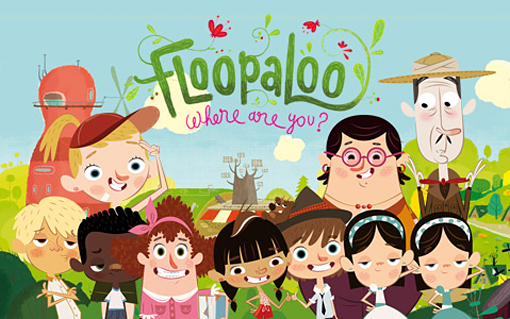
Xilam
Interview with Marc du Pontavice, CEO and president
Taking to MIP-TV: It will be a record-breaking year for Xilam as we are offering second seasons of no less than three of our animated shows: Daltons (39 new half-hours), Floopaloo (26 new half-hours) and Zig and Sharko (26 half-hours)! Our new catch phrase is going to be: “Double your fun with Xilam series!”
On the state of TV animation business in 2013: With the fragmentation of the market, the production increases significantly with more coproduction than ever considering the small license fee paid by the dedicated children’s channels. Comedy is still very popular, preschool tends to be less conservative and broadcasters are slowly recovering from their obsession with pre-established properties.
Biggest challenges: Monitoring the production of four series and a feature film at the same time.
Amount of support from the government: About 15 percent of our expenses.
How to stay ahead: Double your quality, you’ll triple your shelf value. Long term is the only strategy in animation.
Any insights on apps or second screens? Western channels are still the biggest client. But the emerging markets already counts for 15 percent of our turnover. And 2013 will likely see the digital revenues exceed 10 percent of the total Xilam business.





